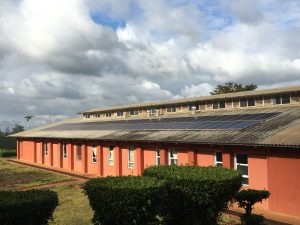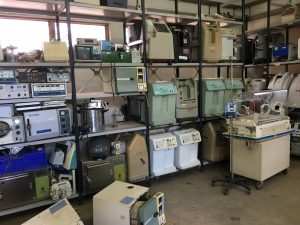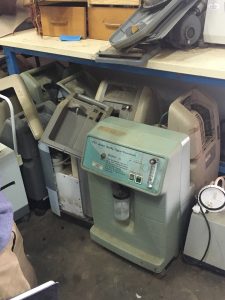“Eventful” doesn’t even begin to describe this week. On Sunday night we had dinner with Dean DesRoches, some of the Rice 360 team, and the Malawian interns who will be coming to Houston in September. It was such a great opportunity to meet some of the engineering students from the Polytechnic and compare their projects and interests with ours. What seemed even more amazing was hearing about the various projects that have been going through the design studio. Everything from an infant monitoring device to an autonomous drone was presented on Monday. The students’ ingenuity and work ethic were so admirable, and I felt that I learned an incredible amount from hearing about their design process.
Our focus this week revolved around needs finding at the big district hospitals. Our stops included Zomba Central Hospital, Mulanje District Hospital, and Thyolo District Hospital. Within each hospital, we went to the maternity ward, nursery, and labor ward to speak with the nurses and discuss some of the current issues they face daily. The wards were a completely new experience to me, something that I could not have truly imagined. The concept of “limited resources” has never been as clearly encapsulated as seeing three infants huddled together under one radiant warmer, trying to escape the all too real threat of hypothermia. Often the hospitals had one or two heaters for the entire room but no way of monitoring or controlling the temperature consistently. Even getting constant electricity is a struggle. The hospitals have to depend on solar power and backup generators, and when those sources of power fail many processes come to an unwilling halt.

I honestly don’t even know where to begin with describing the technology. Much of the equipment around the hospitals was donated, which in theory seems beneficial. However, the models of the donated machines are completely different. When a machine breaks, the Physical Assets Management (PAM) has to face sometimes more than ten different models of the same equipment and figure how to fix them. The wait for spare parts is even worse because they often come from overseas and may take several days to arrive.


One example we saw of this was in the oxygen concentrators. Each hospital had at least five different models, with each requiring differently shaped filters. Expecting technicians to understand all these machines from user manuals and be able to fix them is an impossibility, but one that many hospitals must have to keep operations running.
The nurses at the hospitals are some of the most dedicated people I have ever met, considering their work load and environment. Regardless of day or night shifts, the staff is stretched thinly over several patients and even several wards. While the tangible difficulties facing district hospitals is overwhelming, there seems to be underlying about personnel. The incentive to study and work as a nurse in Malawi seems low. That’s why I’m even more glad to see the level of care the nurses have when taking care of the infants and mothers.
At a dinner recently, Dr. Leautaud posed a question to us: “What do you want to be when you grow up?” In theory this should be simple to answer. From the time we’re in kindergarten, we think about the time when we will be adults. I used to be stuck at this question, knowing my interests but unsure of why I was interested. After this week, however, when I think about what I want to do “when I grow up” I think less in terms of jobs or roles. Instead, I think of the nurses and doctors at the hospitals, of the student innovators and the lecturers who support them, of the researchers studying disease prevention. It’s their dedication to their work that I want to remember and embody.